On Yom Kippur, the day when we are likened to angels, many have a custom to wear white clothing while praying. Married Ashkenazic men traditionally wear a simple, long white garment called a kittel. The kittel is also the traditional Jewish shroud; wearing it reminds us of our mortality and urges us to repent.
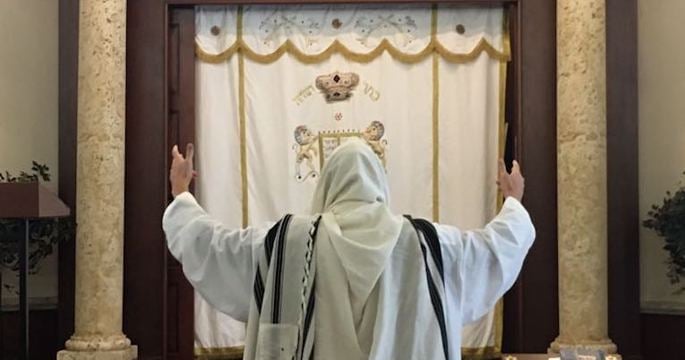
Before sunset (click here for exact time in your location), women and girls light holiday candles, and everyone changes into non-leather shoes and holiday finery.
Kol Nidre
On Yom Kippur, the tallit (prayer shawl) is worn for all the prayer services. In preparation for Kol Nidre, the tallit should preferably be donned before sunset. (If donning the tallit after sunset, the traditional blessing is not recited.)
He chants the Kol Nidre three times, each time on a slightly higher noteIdeally, Kol Nidre should begin shortly before sunset. The Torah scrolls are all removed from the Ark—it is a great mitzvah to purchase the honor of holding the first Torah scroll—and the procession of scrolls moves towards the bimah (reading table) while everyone kisses and embraces the passing Torahs.
After requesting permission, from both the heavenly and earthly courts, to “pray with the transgressors,” the cantor begins the Kol Nidre. He chants the Kol Nidre three times, each time on a slightly higher note. The congregation reads along with the cantor, in an undertone.
The Kol Nidre is followed by a few brief verses and prayers and culminates with the Shehecheyanu blessing, in which we thank G‑d for “granting us life, sustaining us, and allowing us to reach this occasion.” This blessing is recited in honor of every holiday, but usually following the night’s kiddush. On Yom Kippur, because there is no kiddush, the blessing was incorporated as part of the prayers. Women and girls do not recite this blessing with the congregation—as they have already recited it after lighting the holiday candles.
In most congregations, at this point the rabbi delivers a sermon. In many congregations, this sermon is accompanied by an appeal—for charity has the power to evoke heavenly mercy.
The evening prayer service then commences.
We are likened to angels, so we too, like the angels, can recite it out loudDuring Yom Kippur, every time we say the second verse of the Shema, the “Baruch Shem” verse—“Blessed is the Name of the glory of Your kingship forever and ever”—it is proclaimed out loud. Throughout the year, this blessing is recited in an undertone, as it was “stolen” from the angels. On Yom Kippur, however, we are likened to angels, so we too, like the angels, can recite it out loud.
The special Yom Kippur Amidah (standing prayer) incorporates a lengthy confession of sins. This confession is recited silently, and with each sin that we confess, we lightly knock our chest—the domicile of the heart, the seat of our passions and impulses—with our fist. The confession is later repeated, after the Amidah, together with the entire congregation. This double confession is repeated during all the day’s prayers, with the exception of the final Ne’ilah prayer.

The Amidah is followed by liturgy interspersed with the recitation of the verses (Exodus 34:6–7) that allude to G‑d’s Thirteen Attributes of Compassion: “G‑d, G‑d, benevolent G‑d, compassionate and gracious, slow to anger and abounding in kindness and truth; He preserves kindness for two thousand generations, forgiving iniquity, transgression and sin, and He cleanses.”
The entire Kol Nidrei and evening service should take approximately two hours.
Many have the custom to recite the entire Book of Psalms after the evening service.
Yom Kippur Morning and Early Afternoon
We read about the special Yom Kippur service in the Holy TempleThe joint morning and Musaf services occupy the bulk of the day (approximately six hours). The morning service pretty much follows the order of the traditional Shabbat and holiday service. The special Yom Kippur Amidah and confession is recited, followed again by songs and special Yom Kippur liturgy.
Two Torah scrolls are taken from the Ark, and from them we read about the special Yom Kippur service in the Holy Temple—may it soon be rebuilt. The haftorah discusses the concepts of repentance and fasting, the themes du jour of Yom Kippur.
In many communities, the aliyahs—whose supply doesn’t meet the demand, due to the large crowd and the auspiciousness of the day—are auctioned off to the highest bidders, with the monies raised earmarked for a charitable cause.
The Torah reading is followed by the Yizkor service—traditionally preceded by the rabbi’s homily. In the Yizkor prayer we beseech G‑d to kindly remember the souls of our dear departed ones; traditionally, all those who do not recite Yizkor (i.e., those whose parents are both still alive) leave the synagogue for the duration of the brief prayer.
The Yizkor service is followed by the Musaf service. The most prominent feature of this is the Avodah, a rather lengthy and detailed recounting of the Yom Kippur service in the Holy Temple, whose highlight was the high priest’s entry into the Holy of Holies. During the course of the Avodah, on three occasions we relate how the high priest would pronounce G‑d’s ineffable name, and in response the assembled Jews would prostrate themselves on the ground. When reaching these passages, we too prostrate ourselves on our hands and knees.
We beseech G‑d to restore the Temple service with the coming of MoshiachThe Avodah concludes with a series of prayers in which we beseech G‑d to restore the Temple service with the coming of Moshiach. We also recount the tragic story of the cold-blooded murder of the “Ten Martyrs” by the Roman regime.
Towards the end of Musaf, the kohanim (priests) administer the priestly blessing.
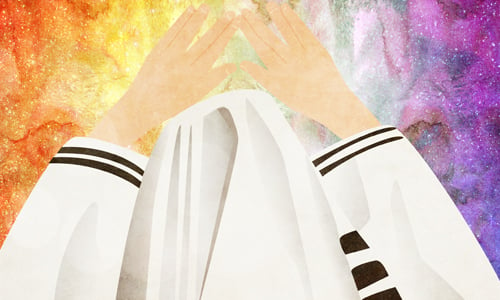
In most synagogues, the Musaf prayer is followed by a break, lasting between one and three hours.
Late Afternoon
Minchah, the afternoon prayer, is called for one or one and a half hours before sunset.
The service commences with the Torah reading, which speaks of the purity of Jewish life and warns us not to engage in immoral practices. For the haftorah we read the entire book of Jonah, which contains a timely message on the importance of repentance and prayer.
The Yom Kippur Amidah is then followed by a few brief prayers. The entire Minchah service lasts approximately one hour.
Now, moments before sunset, in the waning hours of Yom Kippur, we reach the climax of the holiest day of the year, and we recite the Ne’ilah prayer. Ne’ilah means “locking.” The gates of heaven, which were open all day, will now be closed—with us on the inside. During this prayer we have the ability to access the most essential level of our soul, the level that is in a state of absolute oneness with her Creator. The Holy Ark remains open for the duration of the entire prayer.
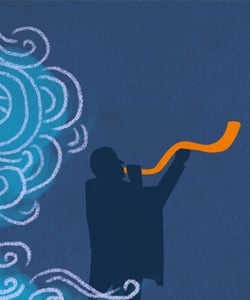
The Ne’ilah Amidah is somewhat abbreviated—it does not contain the lengthy version of the confession. The Amidah is followed by a selection of prayers, and culminates with the cantor emphatically proclaiming the words of the Shema—“Hear O Israel, the L‑rd is our G‑d, the L‑rd is one!” With intense concentration, the congregation repeats the verse. The cantor then recites the “Baruch Shem” verse three times, again followed by the congregation. Finally, with all his might the cantor proclaims seven times, “The L‑rd is G‑d!” and again the congregation repeats after him. This is followed by the joyous proclamation, “Next Year in Jerusalem!”
The shofar is then sounded—one triumphant, long blastThe shofar (ram’s horn) is then sounded—one triumphant, long blast, signifying the end of the holy day. In Chabad synagogues, the shofar blast is preceded by the euphoric singing of “Napoleon’s March.” At this point we are ecstatically confident that G‑d has sealed us all for a wonderful year: a year of happiness, prosperity and health; the year when we will finally experience the long-awaited Redemption.
Before leaving synagogue, we pray the ordinary evening prayer and do Kiddush Levanah if practical.
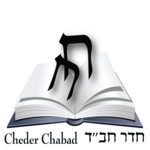

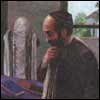







Join the Discussion